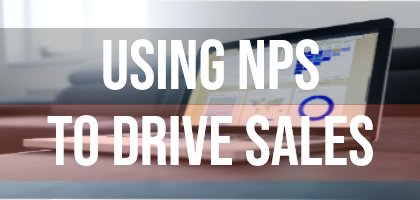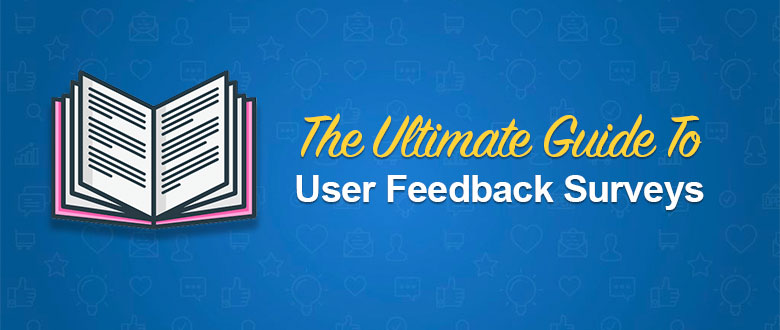We built this YesInsights because we know the importance of listening to your customers. It helps with better business decision making, product growth, and retention. At YesInsights, we eat our own dog food :P. We listen to our customers for our features and we build according to our customer feedback.
One of the main goals of YesInsights is to create a simple platform for you to gather all types of customer feedback across all channels (email, blog, social media, web, etc.). One of the most requested features was to build an NPS survey. We listened to everyone’s recommendations and put one together.
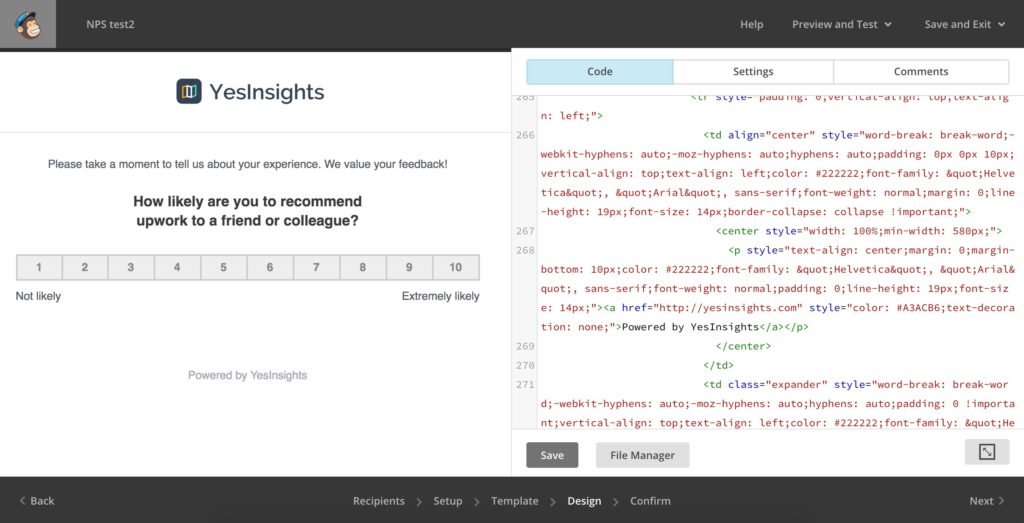
What is an NPS Survey and why use it?
The Net Promoter Score (NPS) was established by Bain & Company in 2003 to help companies measure and evaluate customer loyalty. Fred Reichheld, a partner at Bain & Company, created a new way of measuring how well an organization treated the people whose lives it affected.
The NPS works by sending a quick, one-question survey to your customers that asks them,
How likely is it that you would recommend [Company name] to a friend or colleague?
The question has a 1-10 rating scale for respondents to answer. With 10 being extremely likely to recommend and 1 being not at all likely. Here are a few advantages to using an NPS survey:
Here are a few advantages to using an NPS survey:
- Easy to use – An NPS survey makes it easy to send and receive feedback. It’s similar to our one-click survey where your customers can easily select a response and it will be logged. This results in a much higher survey completion rate because it reduces the barrier to completing a survey. A traditional survey requires people to click on a link, then go to another site, and complete a long survey. With one-click and NPS surveys, the customer can just select an option and not have to worry about hitting reply and typing up an email to give customer feedback.
- Easy to follow up and plan ahead – NPS practitioners typically share customer feedback very quickly after it is received. They quickly ask managers or frontline employees to contact every customer who gives an unfavorable score (a detractor), to identify the customer’s concerns, and to fix the problem whenever possible. Frontline managers and senior leaders use NPS data and customer comments to inform decisions about process changes, new products, and other innovations.
- Simple and Straight Forward – The Net Promoter Score is a single number that can be tracked from week to week and month to month, just like net profit. As with net profit, of course, a company’s Net Promoter Scores can be broken down however you wish—by business line, by store, by product, even by individual customer-service rep. Customers usually don’t have to think too much. It’s soooo easy that even a 10-year-old can understand it 🙂
Three ways of measuring NPS
When creating an NPS survey, it’s important to understand how to measure the NPS and how to analyze the feedback. Here are the three ways of measuring the NPS:
1) Promoters (9 or 10) – Promoters are loyal, enthusiastic fans. They sing the company’s praises to friends and colleagues. They are far more likely than others to remain customers and to increase their purchases over time. Moreover, they account for more than 80 percent of referrals in most businesses. They are, in general, pleasant for employees to deal with.
2) Passives (7 or 8) – These are satisfied but unenthusiastic customers who can be easily wooed by the competition. Their repurchase and referral rates are as much as 50 percent lower than those of promoters. Their referrals are likely to be qualified and less enthusiastic. Most telling: if a competitor’s ad catches their eye, they may defect.
3) Detractors (0-6) – Detractors are unhappy customers. They account for more than 80 percent of negative word-of-mouth. They have high rates of churn and defection. Some may appear profitable from an accounting standpoint, but their criticisms and bad attitudes diminish a company’s reputation, discourage new customers and demotivate employees.
Companies that are using an NPS Survey
Any business could be using NPS. All businesses of all sizes should be listening to their customers. A wide range of businesses use NPS surveys for customer feedback. These range from startups in the food space to e-commerce companies as well as enterprise companies. Here’s a list of a few companies that are using NPS surveys for customer feedback.
- JetBlue
- Virgin Airlines/Media
- Verizon
- DirectTV
- HP
- Microsoft
- Ascension Health
- Teamhealth
- Paypal
- Vanguard
Setting up an NPS survey within YesInsights is quite simple and takes less than a minute. Start your free trial now.
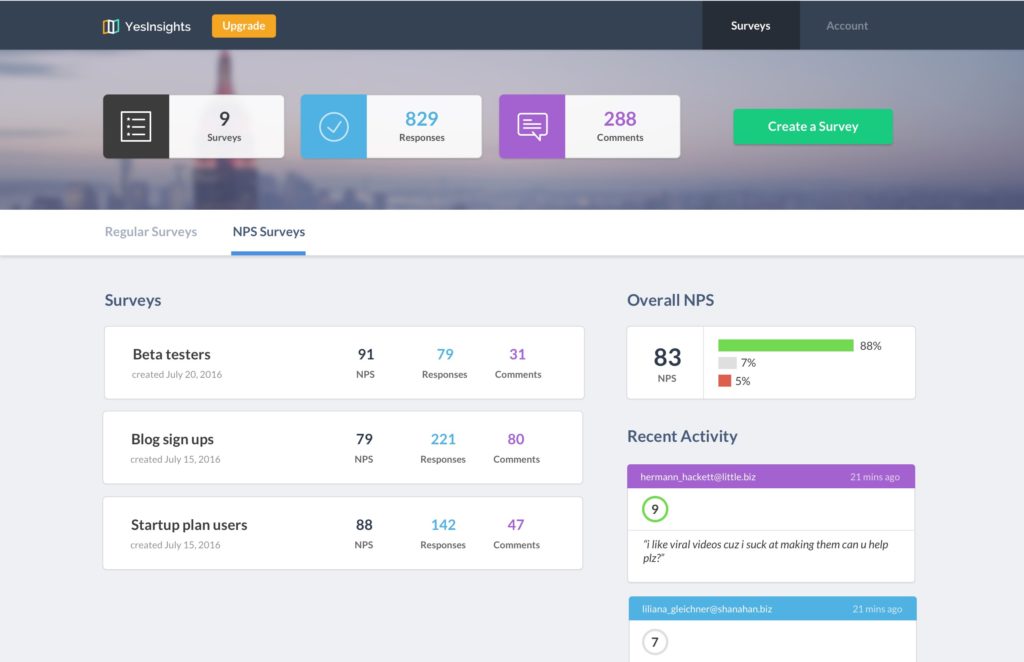
On your dashboard, you’ll see an “NPS Surveys” option, in addition to the “Regular Surveys” option you’re used to. To create an NPS survey, click the “Create a Survey” button at the top-right.
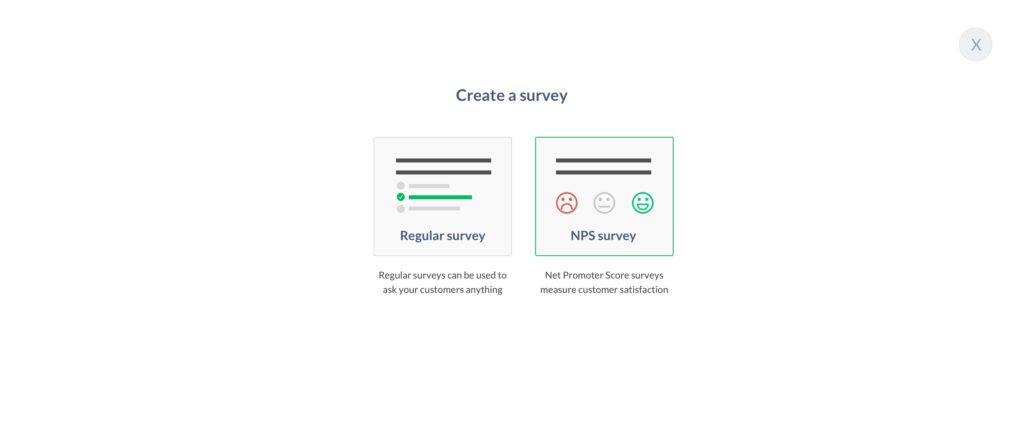
You’ll see a modal dialog that lets you choose which kind of survey you’d like to create. Select the “NPS survey” option on the right.
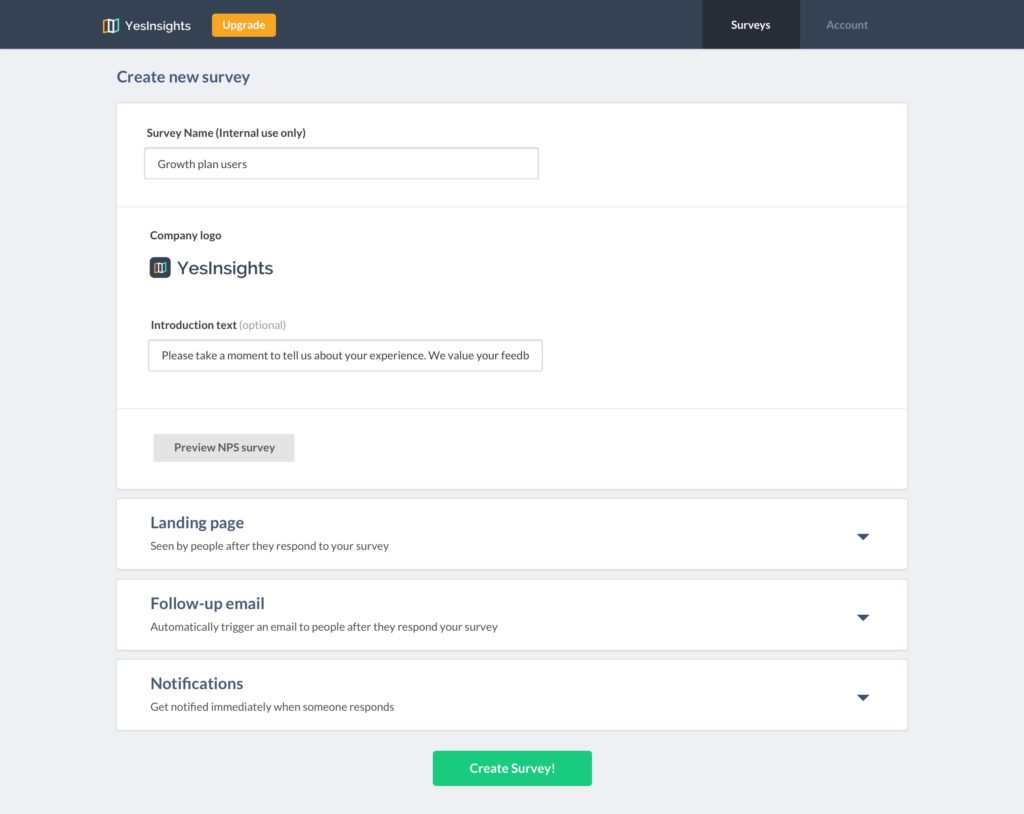
The NPS survey form should look familiar if you’ve created a survey with us before. You’ll have the option to upload your company logo to be shown on the NPS survey itself. And you can edit the introduction text!
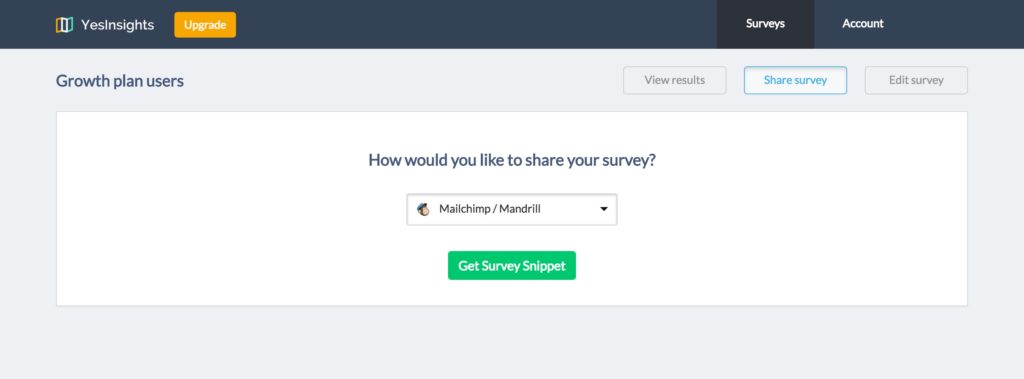
After you create your survey, you’ll see a drop-down menu that lets you select your email marketing service (in this example, we’ll be using MailChimp/Mandrill).
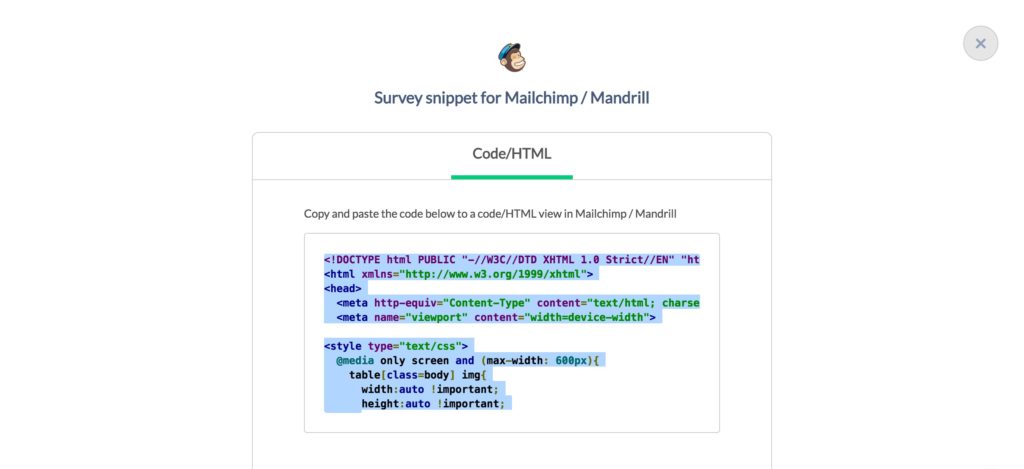
Click on the code snippet, and we’ll highlight it for you, for easy copying. If your browser supports it, we’ll even copy the snippet to your clipboard for you!

Paste the copied code snippet into your email editor, and you should be able to see a preview of the NPS survey.
Congrats! You’ve set up your first NPS survey. Now you can understand your customer feedback a lot more and make better business decisions.
Once you start receiving responses, you can log into the dashboard and view all the analytics including who answered your surveys!
If you’re looking to create an NPS survey like this or create a simple one-click survey to gain instant customer feedback, sign up for YesInsights

